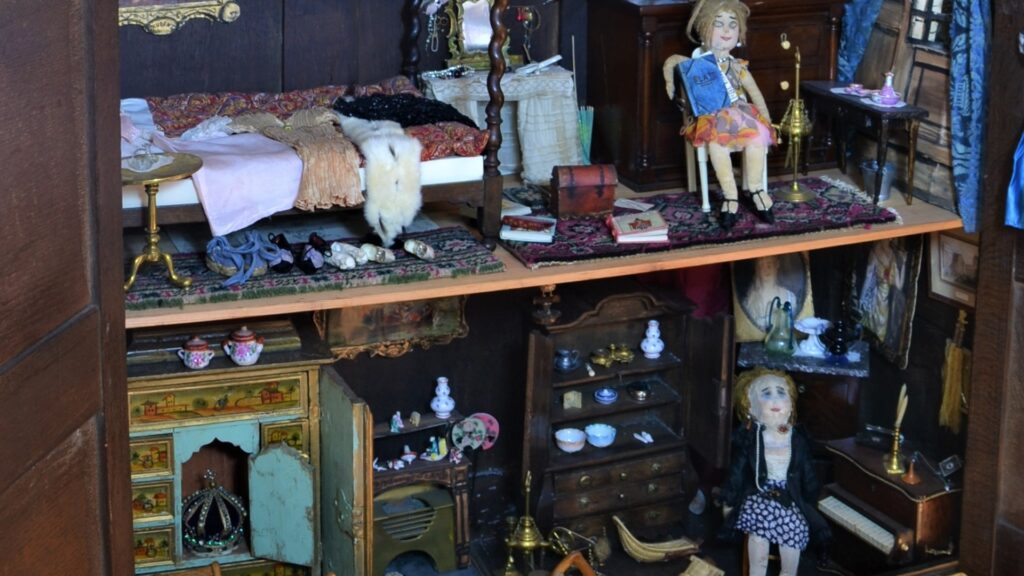All rooms
The interior
Hildasholm is full of history, with every room bearing traces of the Munthe family's life. Different eras and styles - from Swedish and English to Italian - meet here with unique objects and memories.
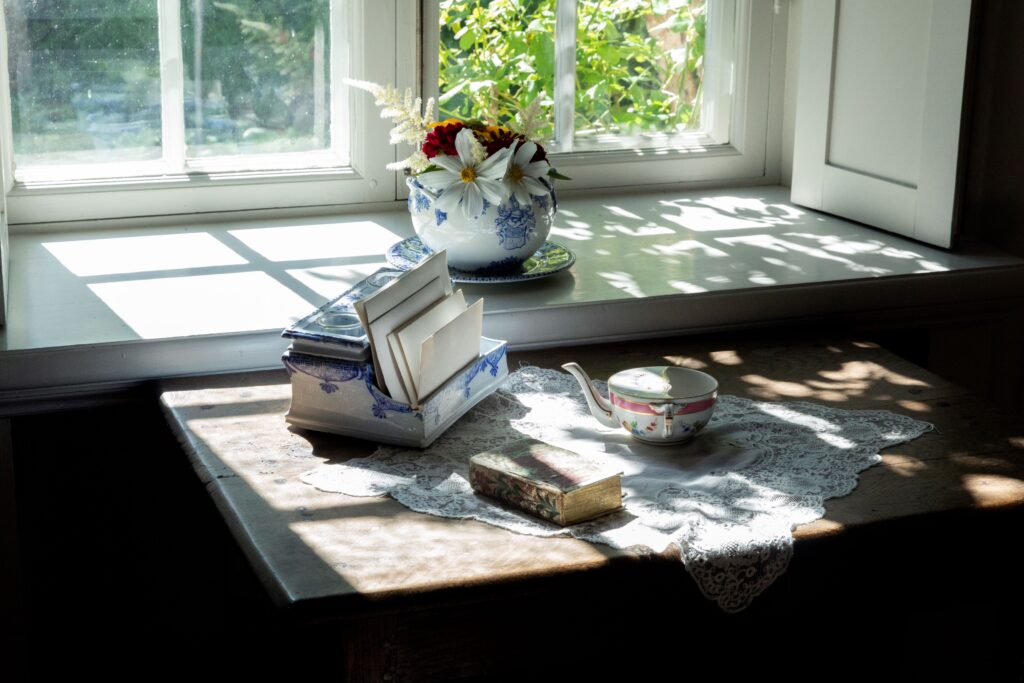
Hilda's bedroom
Hilda Munthe's bedroom is personalised with antique furniture. Her narrow four-poster bed is made of Hepplewhite, and the wardrobe doors feature paintings by her son Malcolm Munthe. Her clothes - blouses, skirts and riding boots - are still visible in the wardrobe.
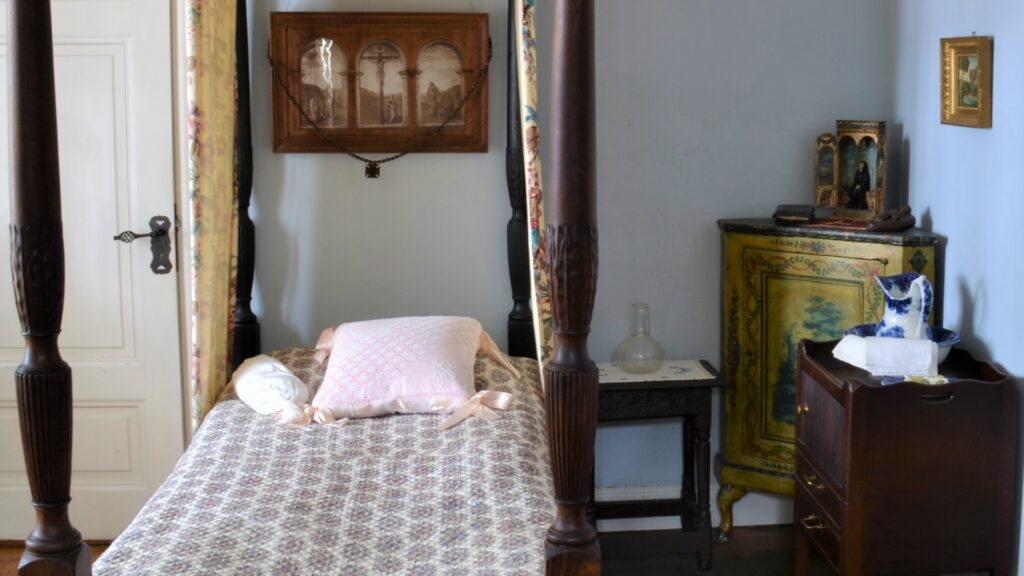
Hilda's writing room
Here is a portrait of three-year-old Hilda, painted by James Sant and named 'Portrait of the Year' in 1880. Next to it is a unique double portrait of her sons Peter and Malcolm - the image changes depending on the viewing angle.
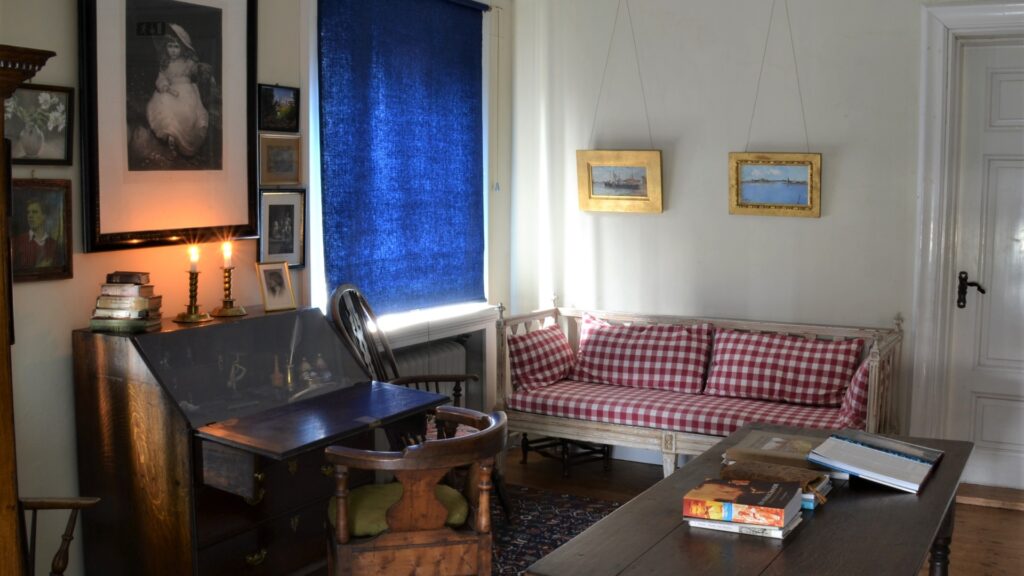
The bathroom
Hildasholm was modern for its time, with toilets, bathrooms and water-borne central heating. However, electricity was installed much later and to a limited extent.
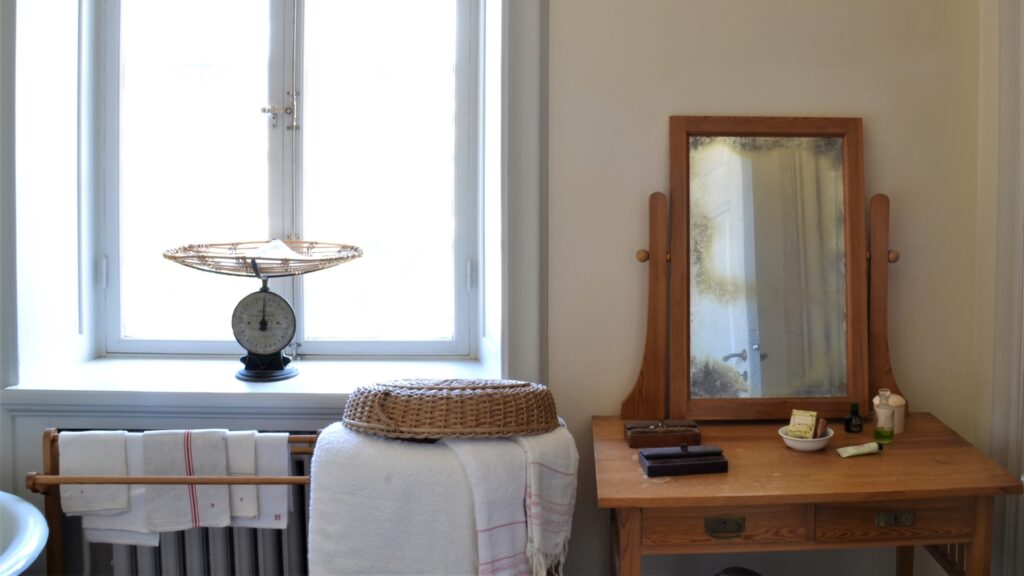
The chapel
The chapel was originally the nanny's room but was moved here when the boys grew up. Hilda Munthe, granddaughter of an Anglican bishop, created this place of worship. The cornice features quotes from Macbeth, and the altar is adorned with biblical paintings by her son Peter.
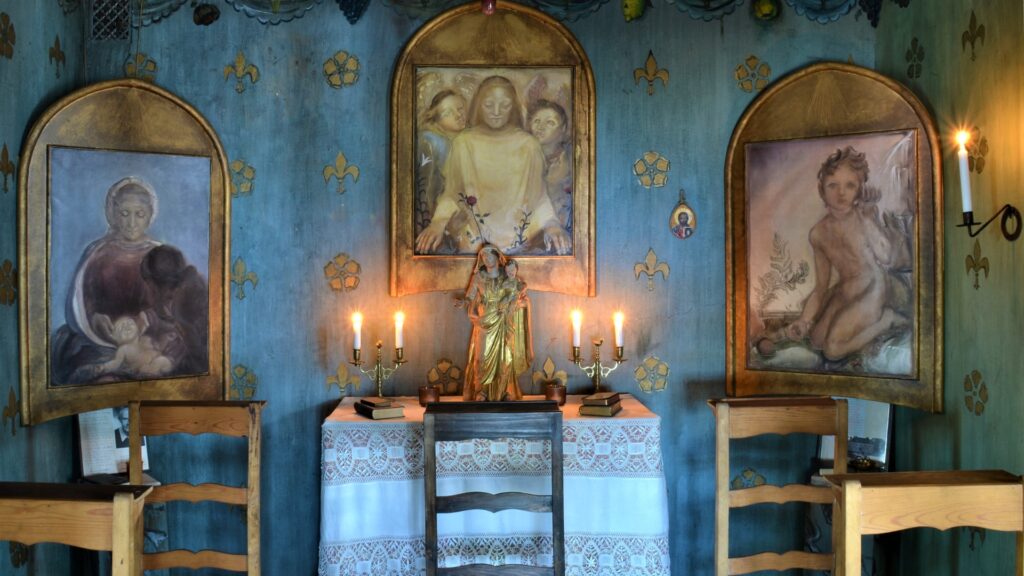
The kitchen
The kitchen is preserved in its original state from the early 1900s. A large copper boiler supplied the bathroom with hot water. Goods were delivered through the kitchen window, and next door was the servants' dining room - called the "courier room".
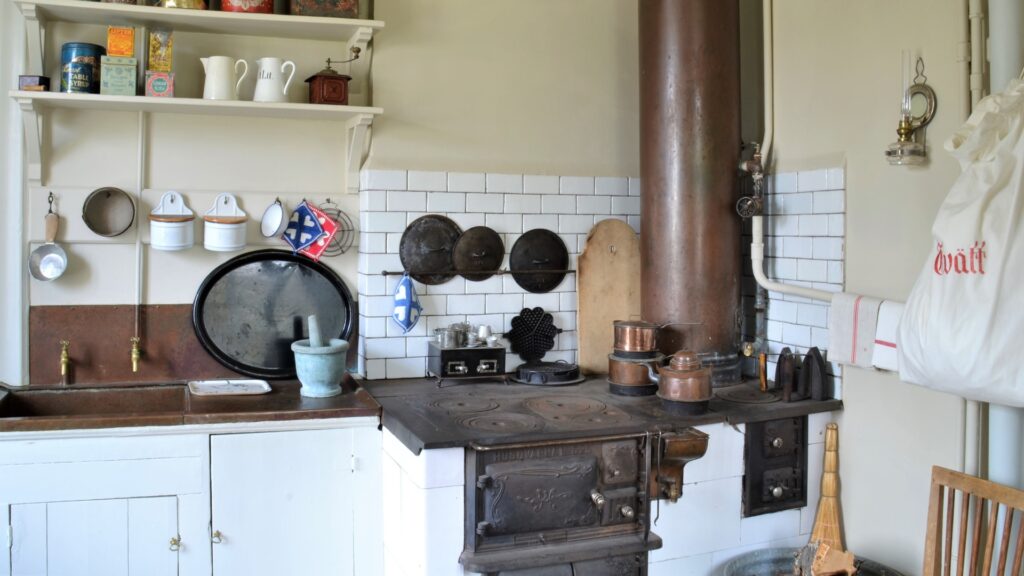
Dining room
The dining room table is set with china decorated with the Munthes family crest. On the oak cabinet is a gilded wooden clock from the 18th century, commissioned by John Pennington to bribe the Turkish sultan to stop the slave trade. The Sultan declined, and the clock remained in the family.
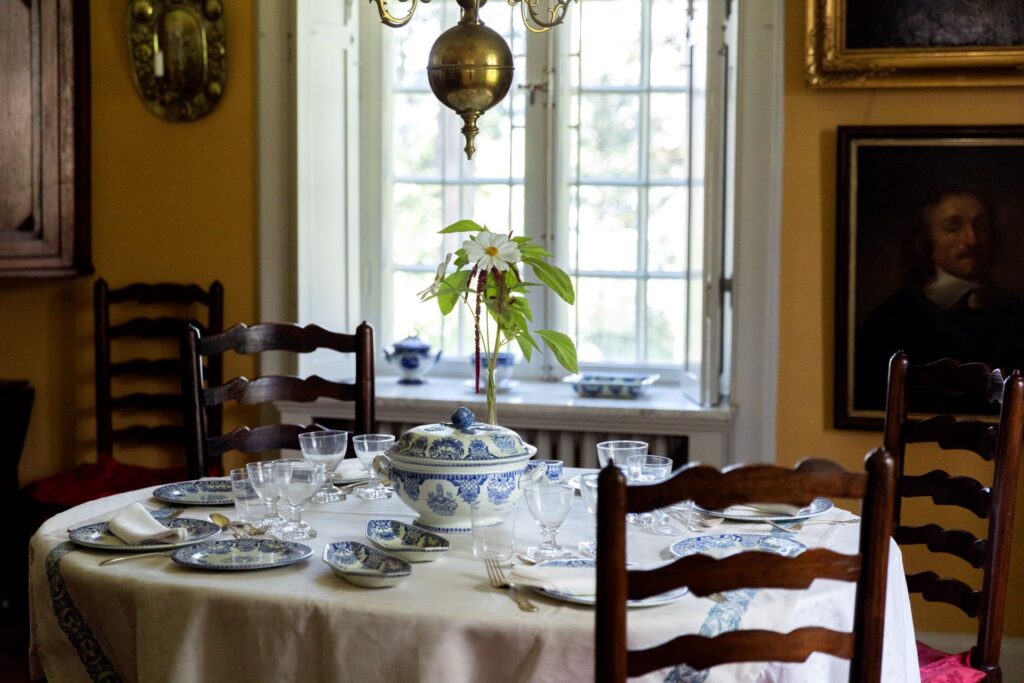
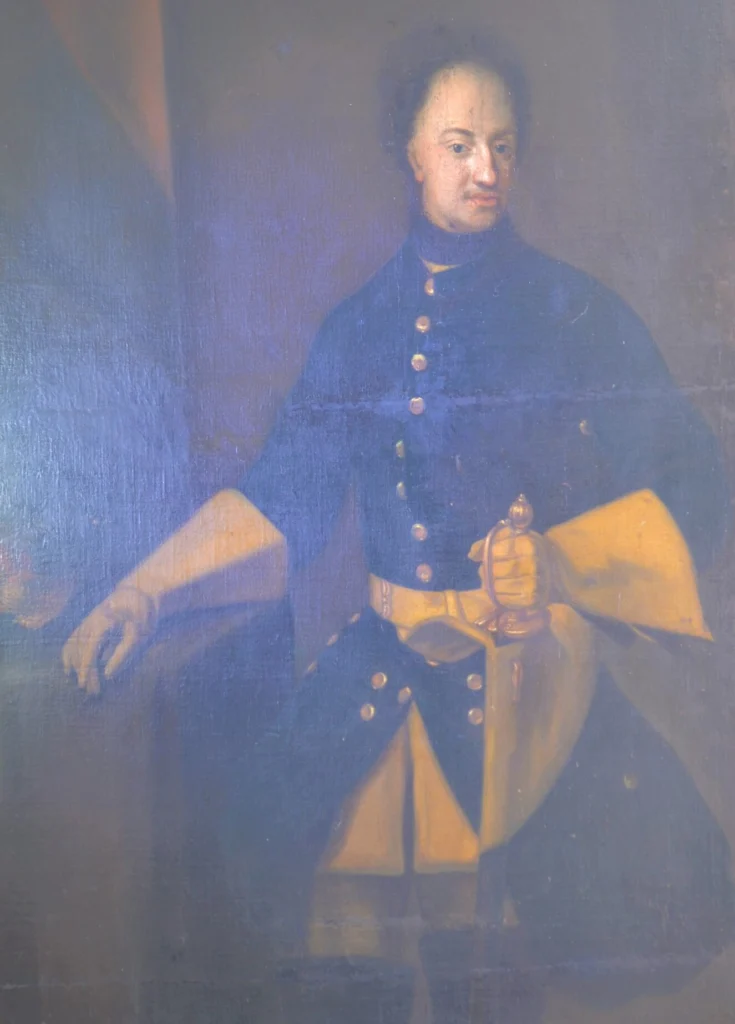
The morning room
This was first Axel Munthe's study. Here hangs a full-length portrait of Charles XII, painted by David von Krafft in 1717. The room also contains an 18th-century piece of furniture with petit point embroidery, sewn by Hilda while telling fairy tales to her children.
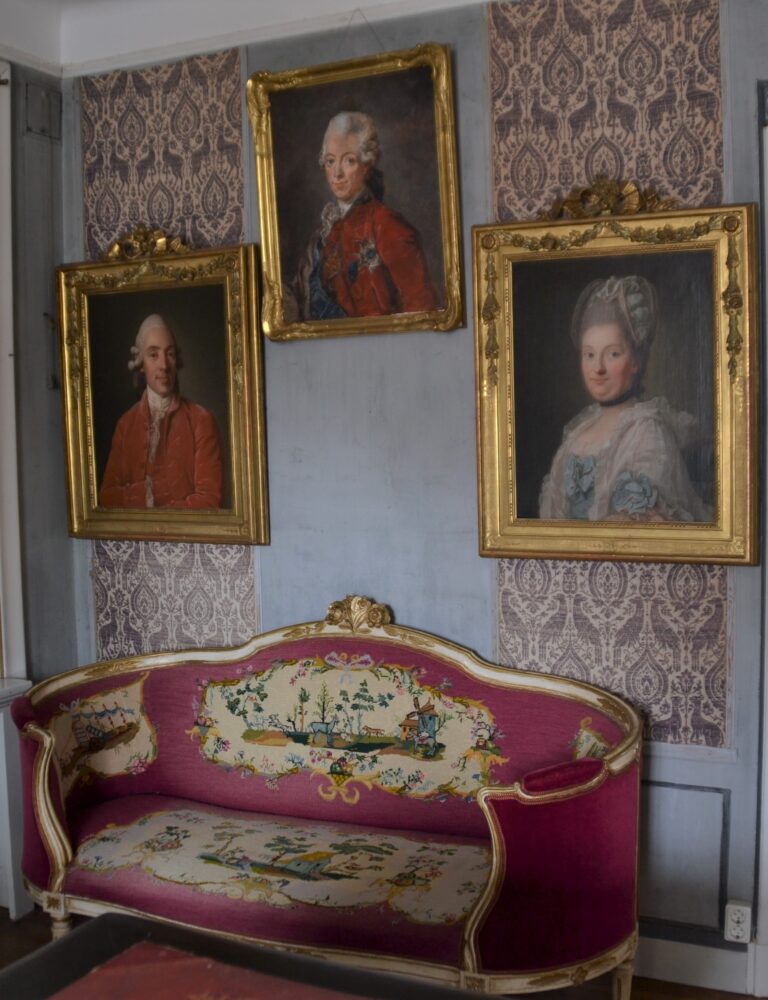
Music room
Formerly the nursery of the house, now decorated to mimic a woodland glade. There is a grand piano, a group of furniture by Thomas Chippendale and a collection of family portraits. On the wall is an oil sketch by Hilda Munthe, the finished version of which is at Southside House in Wimbledon.
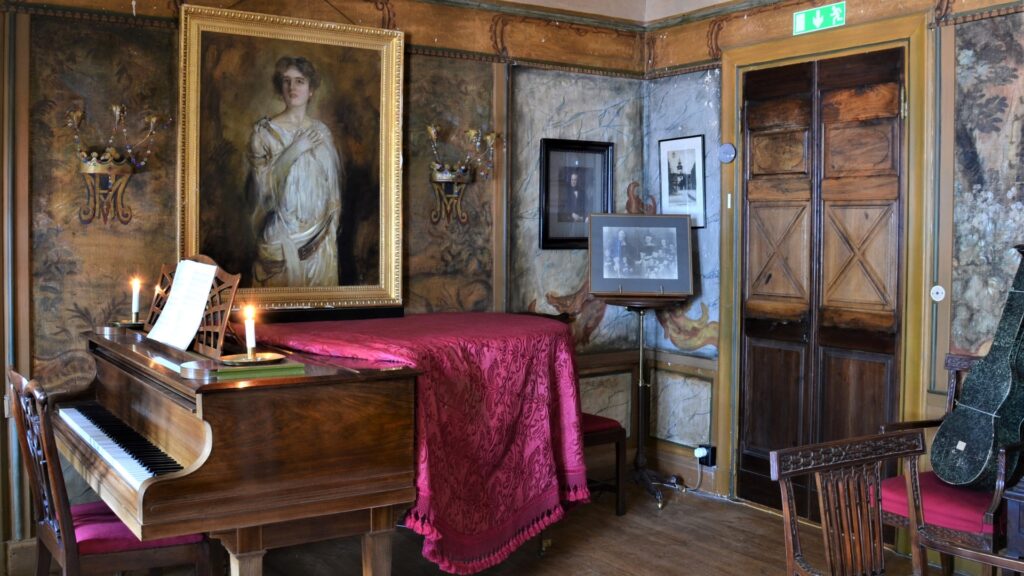
Lower Halls
The central hall of the house has Rococo paintings by Ivar Karlsson. Above the sofa hangs a portrait of Johan Lorentz Munthe, mayor of Eksjö in the 18th century and the model for Alice Tegnér's children's song. The cornice has Italian wood panelling from the 15th century.
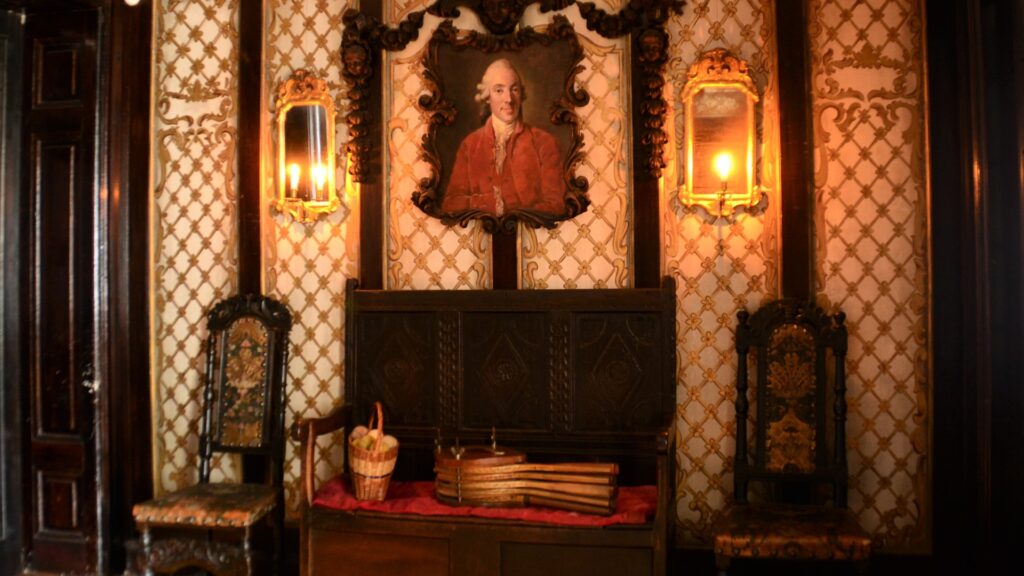
North guest room
On the walls are works by Swedish artists such as Hugo Birger and Gustaf Cederström, acquaintances of Axel Munthe in Paris. Three 18th-century chairs, a gift from Oscar II, previously stood in Munthe's residence at Tullgarn Castle.
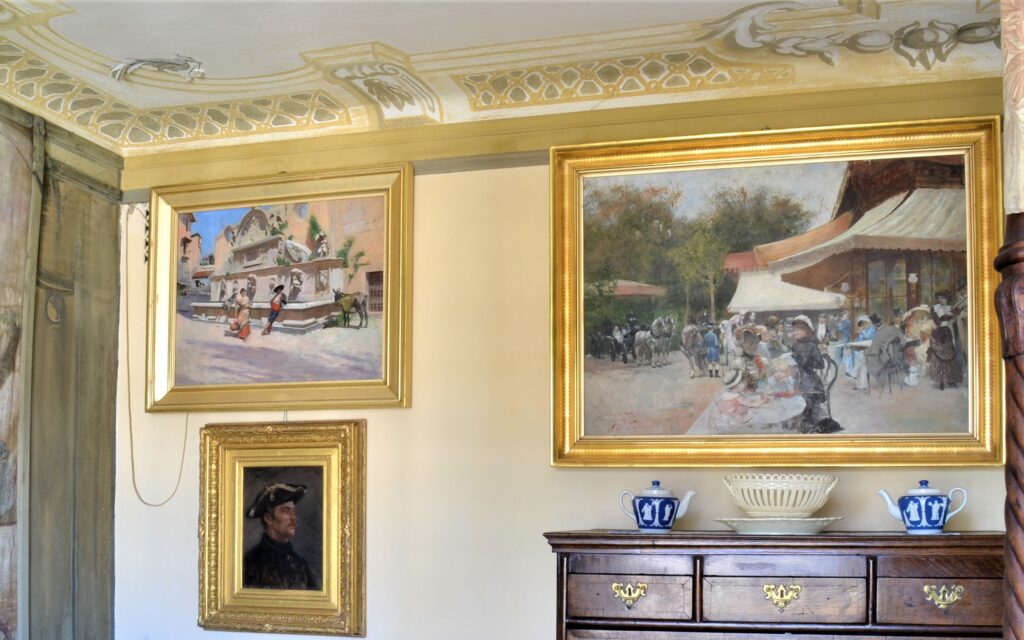
Peter's Rum
The room contains several paintings by Peter Munthe, as well as an allegorical painting by Malcolm Munthe depicting the Second World War - where Britannia and her allies fight Nazism, depicted as spiders with the heads of Hitler and Göring.
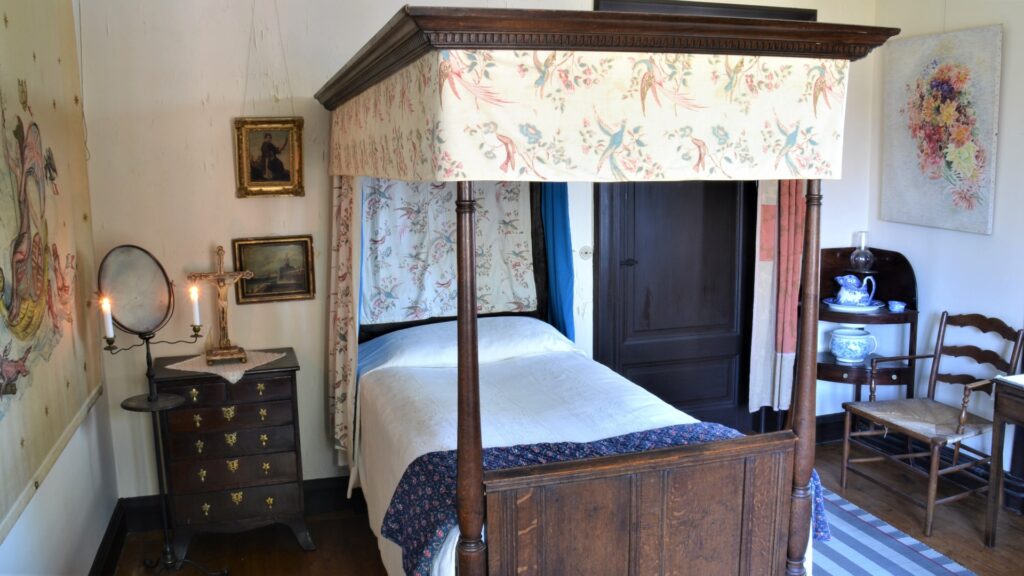
The lounges
The walls are mostly decorated with floral motifs and a portrait of Catherine Pennington. The furniture was made by Sheraton in London in the 1780s and was unpacked for over 100 years before it came to Leksand. From the parlour, patio doors lead out to the lake side.
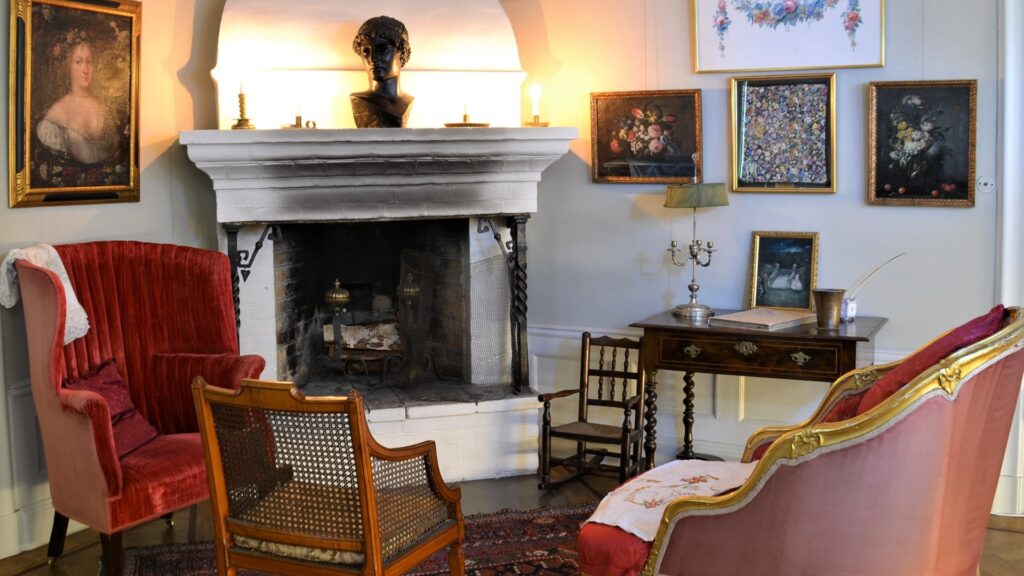

Victoria's bedroom
During her visit in 1924, Queen Victoria stayed in this room. On the wall is a portrait of Natalia Obrenovic, former Queen of Serbia and nun in France. The textiles of the bed are Serbian monastic embroideries, a gift from Queen Natalia.
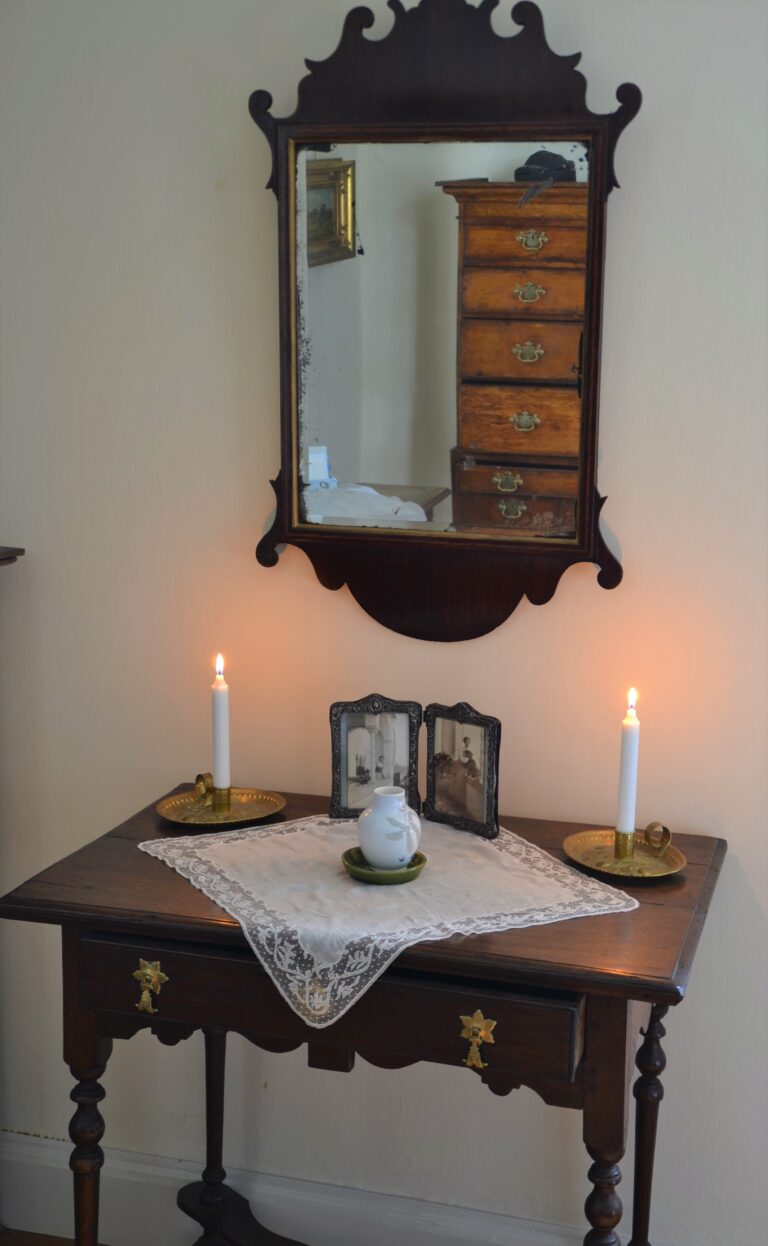
Upper Hall
The oak banister of the staircase is said to come from a French monastery. Above it is a doll's house with figures and furniture created by Hilda and her sons. Next to it is the 'Marlborough chest', a gift from the English Duke of Marlborough to Charles XII.
